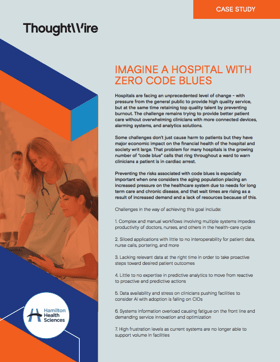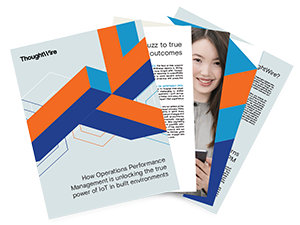In my first blog post of the series, I introduced the theme of bringing in the ‘Right’ tools to tackle the challenges of implementing digital solutions in the healthcare space. In this post, we will focus on one specific tool – automation. In many industries, automation has met with resounding success saving billions by virtually eradicating menial manual processes and old-fashioned methods of communication.
Yet in some other industries, like healthcare, it is often met with friction, resistance, and workarounds impeding its success. Surprisingly, this issue is common across the globe despite differences in healthcare models, cultural practices, and priorities. So, what exactly is contributing to the challenges of automation? And to address the elephant in the room... it is not laziness.To understand why challenges around automation exist in healthcare, it’s important to distinguish what sets healthcare apart from those other industries. What it boils down to is the fact that it is directly dealing with human lives - our lives - and all the emotional challenges that comes with. Clinicians are being asked to inherently trust a system and an automated process to replace duties they have been performing.
‘What if the system glitches or malfunctions and I end up giving my patient the wrong medication or dose?’ Some would argue that clinicians would still double check the process, so the risk of a system error is minimized. If that’s the case, what’s actually being automated? Remember, habits are tough to change and that includes formed bad habits.

Let’s take a look at the automated process of barcode medication administration (BMA), a process created to check the various ‘Rights’ of medication administration (the Right: patient, medication, dose, route, time, documentation, reason, and response) and to automate the documentation and signage of the administration.
The Intended Workflow
- Nurse would gather all the medication,
- Bring it to the patient bedside,
- Use a barcode scanner (mobile device or attached to a workstation on wheels) to scan the patient’s armband,
- Scan each medication package beside the patient,
- Unpackaging the medication and administering it,
- Digitally sign the administration of medication.
All these steps are taken to ensure that there is no possible error in the medication administration process. This process then gets repeated for each patient on the nurse’s assignment.
One of the Workarounds
- A nurse prints out a patient barcode to bypass the armband scan (needing to physically be beside the patient),
- Gather all the medication and scans each medication package,
- Digitally sign the administration of medication,
- Open all the medication in the med room or by their workstation (on wheels),
- Place all medication into a medication cup,
- Walks into the patient room with a cup of water and the medication cup and administer it to the patient; sometimes if the nurse is in a hurry, they might just leave it by the patient’s bedside... hopefully the right patient.
When I was practicing as a nurse and BMA was being introduced to my ward, the number of reasons I heard from my fellow nurses to use workarounds was staggering. There were:
- design and device issues - “I can’t read the text or navigate the screens on the device”
- added processes and duration issues - “I can co-sign a narcotic drug administration on a piece of paper in 10 seconds. It takes too long electronically, I have to navigate through so many screens until I can scan their badge and don't get me started if they don't have their badge on them!”
- disruption issues - “I've been yelled at by the neighbouring patients of how annoying the light and beeping is when I'm giving nighttime meds, it's just simpler to come in with all the meds pre-poured”
- trust and de-skilling issues - “I don't know what it's doing, I scan the package and I get a green light, so I guess that means I'm good to go right?”
The fear of clinicians suffering de-skilling from automated practices is one not to be taken lightly. Even with safety measures put in place, errors can still manifest in the data. One extra ‘0’ or decimal point for a drug dose is enough to be critical.
‘...but green light means I'm good to go right?’
How could BMA be tweaked slightly so that the solution reinforces best practices and re-skills clinicians rather than de-skilling? What if instead of just a ‘green light’ all the ‘8 Rights’ were displayed on the screen with a verification symbol beside them reminding the clinician every single time they scan a drug what needs to be checked? The process remains intact. All that has been changed is increased visibility around critical information, which will help reinforce best practices and assure the nurse that the system is checking the right things.
I know what you might be thinking, that ‘tweak’ doesn’t address the issue around the error getting entered into the system, that extra ‘0’ will still be there and the screen would still show ‘Dose’ with a big green checkmark. This is true, but by bringing to the forefront of the nurse’s thoughts those 8 ‘Rights’, their tacit knowledge, their nursing ‘Spidey senses’ have an opportunity to shine.
It is clear that automating workflows that are very time sensitive, have large ethical constraints, or technical constraint, carry more risks than reward. A solution that does not add new steps to the clinician’s workflows, but rather augment what clinicians already know and perform is a great approach to addressing the ‘habit issue’.
The way the solution is presented is key. Cut through all the ‘noise’ and data that is out there and present the right amount of information; too much and clinicians will feel overwhelmed, too little and you run the risk of de-skilling. Finding the right balance between which workflows to automate as well as what and how much data to present is how you’ll automate the ‘Right’ things the ‘Right’ way.
On December 6th at 1:00 pm (EST) we're presenting a free webinar on Augmented Intelligence, and it's role as the key for healthcare's digital future. Save your spot and register for free here!






